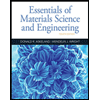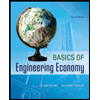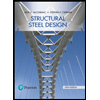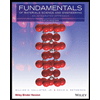
(a)
To explain:
The difference between oxidation and reduction electrochemical reactions:
(a)
Answer to Problem 1QAP
The difference between oxidation and reduction electrochemical reactions is explained as below:
Explanation of Solution
Electrochemical reaction is the process that involves electron transfer between two substances mostly a metal and an electrolyte. It includes oxidation and reduction reactions that occur simultaneously. Oxidation reaction involves loss of electrons by a molecule or an atom to form a cation. This causes increase in oxidation state. Reduction reaction involves gain of electrons by an atom to form an anion. This causes decrease in oxidation state. Thus, the basic difference between oxidation and reduction electrochemical reaction involve loss and gain of electrons in an atom, respectively.
(b)
To explain:
Which reaction (oxidation and reduction) occurs at anode and which at the cathode?
(b)
Answer to Problem 1QAP
The reaction (oxidation and reduction) occurs at anode and at the cathode is explained as below.
Explanation of Solution
Oxidation and reduction reactions occur at electrodes. Anode refers to negative electrode and cathode refers to positive electrode. Oxidation takes place at the anode as it involves loss of electrons. Reduction takes place at the cathode as it involves gain of electrons.
Want to see more full solutions like this?
Chapter 17 Solutions
Materials Science and Engineering: An Introduction, 10e WileyPLUS + Abridged Loose-leaf
- "II-1 The shaft shown in Figure P11-I was designed in Problem 10-1. For the data in the row(s) assigned from Table P11-1, and the corresponding diameter of shaft found in Problem 10-1, design suitable bearings to support the load for at least 7E7 cycles at 1500 rpm. State all assumptions. (a) Using hydrodynamically lubricated bronze sleeve bearings with Ox = 20, 1/d=1.25, and a clearance ratio of 0.001 5. assume bearings act as simple supports FIGURE P11-1 Shaft Design for Problem 11-1 11-2 The shaft shown in Figure P11-2 was designed in Problem 10-2. For the data in the row(s) assigned from Table P11-1, and the corresponding diameter of shaft found in Problem 10-2, design suitable bearings to support the load for at least 3E8 cycles at 2.500 rpm. State all assumptions. (a) Using hydrodynamically lubricated bronze sleeve bearings with ON=30, 1/d=1.0, and a clearance ratio of 0.002. FIGURE P11-2 Shaft Design for Problem 11-2 Table P11-1 Data for Problems assume bearings act as simple…arrow_forwardFor the frame below, calculate the shear force at point Q. Take P=13 and note that this value is used for both the loads and the lengths of the members of the frame. 1 A Q ✗ 19 KBP 2.5P- B R C 45 degrees ✗ 1 .2P- 4PhN -P→arrow_forwardCalculate the Bending Moment at point D in the frame below. Leave your answer in Nm (newton-metres) J J A 2m 2m <2m х D 不 1m X E 5m 325 Nm 4x 400N/marrow_forward
- In the beam below, calculate the shear force at point A. Take L=78 and remember that both the loads and the dimensions are expressed in terms of L. 143 1 DX A - Li 4 LhN 14LRN/m Х B 22 3 L.arrow_forwardCalculate the Shear Force at Point F on the beam below. Keep your answer in Newtons and make shear force positive to the right. A х 2m <2m E D 5m 1m Хт 325N1m 400N/m 8arrow_forwardThe normal force at C on the beam below is equal to: A ShN C X 15h N 8 ○ OkN 2.5kN 10kN ○ 12.5kN 1m Im 1m 1m;arrow_forward
- Consider the circuit in Fig. 4. (a) Use mesh analysis to find the currents i1, i2, i3. Hint use the supermode method. (10 marks) (b) Determine the Thévenin equivalent of the circuit that is connected to the dependent source (10 marks). (c) If the dependent source was replaced with a load resistor, what would be the value of its resistance so that the load would receive the maximum power from the rest of the circuit? (2 mark)arrow_forwardCalculate the y coordinate of the of the centroid of the shape below. Take A= 18.5 8 6A 4A X 6Aarrow_forwardI need help to resolve the case, thank youarrow_forward
- Formal Charge Distribution vs Oxidation States Te- For the Lewis diagram, above, determine: 0 The overall charge of the molecular species shown. -2 The formal charge on the tellurium atom. +7 The formal oxidation number of the tellurium atom. 1 pts Submit Answer Incorrect. Tries 3/5 Previous Tries Review: • For overall charge, compare the number of electrons depicted with the sum of the valence electrons for the free atoms. (Remember that an electron has a negative charge.) • Rules Governing Formal Charge • Rules for Assigning Oxidation States.arrow_forward. (a) Use mesh analysis to find the current i. (b) Determine the Norton equivalent of the circuit that is connected to the 5 ohm resistor (c) If the 5 ohm resistor was replaced with a load resistor, what would be the value of its resistance so that the load would receive the maximum power from the rest of the circuit?arrow_forwardImplement the ladder logic program needed to satisfy each of the following (assume inputs A, B and C are all normally open toggle switches). (a) When input A is closed, turn on output X, but hold on output Y until A opens. (b) When input A is closed and either input B or C is open, turn on output Y, otherwise it should be off. (c) When input A is closed or open, turn on output Y and turn off output X. (d) When input A is closed, turn on output X and turn off output Y.arrow_forward
 MATLAB: An Introduction with ApplicationsEngineeringISBN:9781119256830Author:Amos GilatPublisher:John Wiley & Sons Inc
MATLAB: An Introduction with ApplicationsEngineeringISBN:9781119256830Author:Amos GilatPublisher:John Wiley & Sons Inc Essentials Of Materials Science And EngineeringEngineeringISBN:9781337385497Author:WRIGHT, Wendelin J.Publisher:Cengage,
Essentials Of Materials Science And EngineeringEngineeringISBN:9781337385497Author:WRIGHT, Wendelin J.Publisher:Cengage, Industrial Motor ControlEngineeringISBN:9781133691808Author:Stephen HermanPublisher:Cengage Learning
Industrial Motor ControlEngineeringISBN:9781133691808Author:Stephen HermanPublisher:Cengage Learning Basics Of Engineering EconomyEngineeringISBN:9780073376356Author:Leland Blank, Anthony TarquinPublisher:MCGRAW-HILL HIGHER EDUCATION
Basics Of Engineering EconomyEngineeringISBN:9780073376356Author:Leland Blank, Anthony TarquinPublisher:MCGRAW-HILL HIGHER EDUCATION Structural Steel Design (6th Edition)EngineeringISBN:9780134589657Author:Jack C. McCormac, Stephen F. CsernakPublisher:PEARSON
Structural Steel Design (6th Edition)EngineeringISBN:9780134589657Author:Jack C. McCormac, Stephen F. CsernakPublisher:PEARSON Fundamentals of Materials Science and Engineering...EngineeringISBN:9781119175483Author:William D. Callister Jr., David G. RethwischPublisher:WILEY
Fundamentals of Materials Science and Engineering...EngineeringISBN:9781119175483Author:William D. Callister Jr., David G. RethwischPublisher:WILEY





